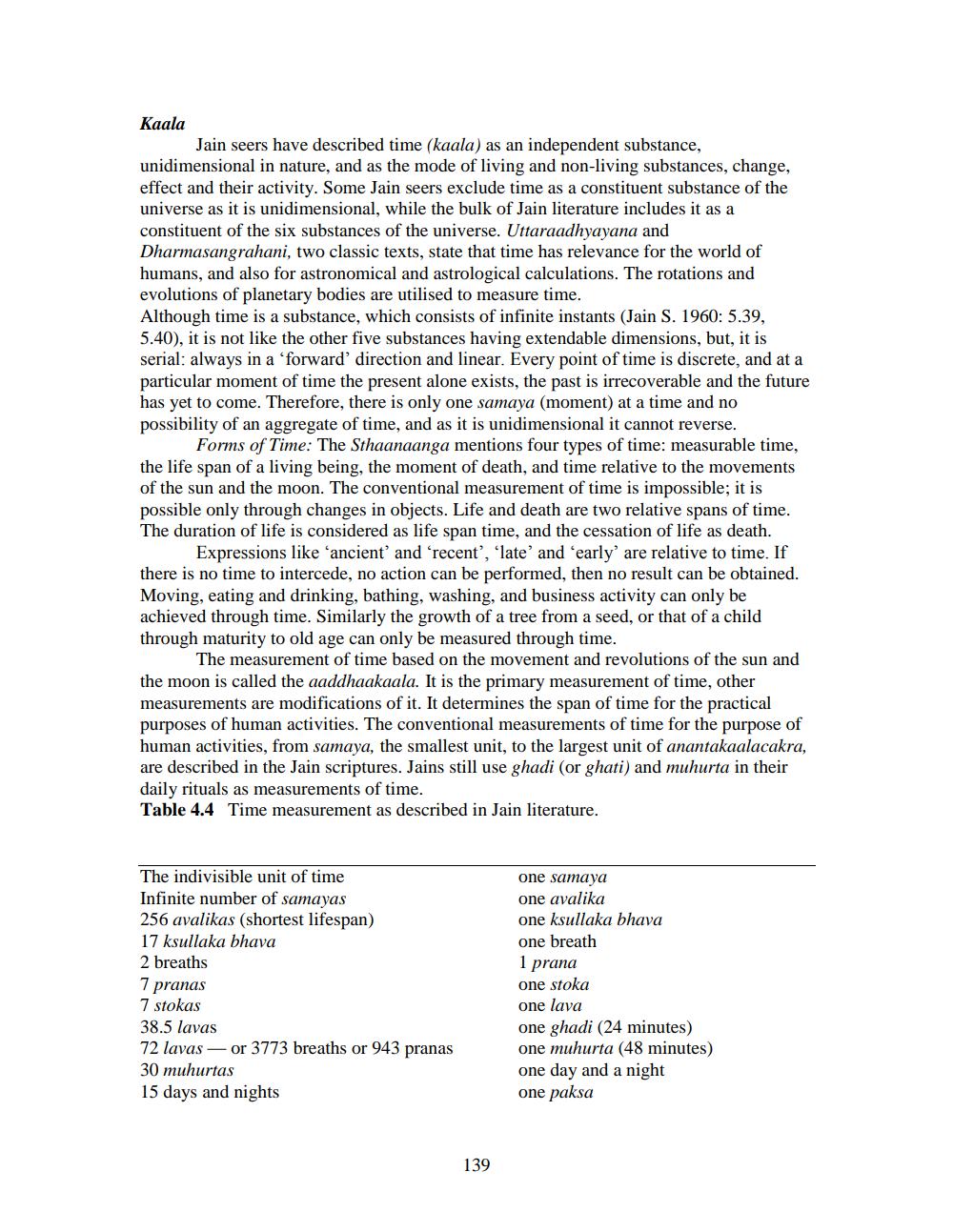________________
Kaala
Jain seers have described time (kaala) as an independent substance, unidimensional in nature, and as the mode of living and non-living substances, change, effect and their activity. Some Jain seers exclude time as a constituent substance of the universe as it is unidimensional, while the bulk of Jain literature includes it as a constituent of the six substances of the universe. Uttaraadhyayana and Dharmasangrahani, two classic texts, state that time has relevance for the world of humans, and also for astronomical and astrological calculations. The rotations and evolutions of planetary bodies are utilised to measure time. Although time is a substance, which consists of infinite instants (Jain S. 1960: 5.39, 5.40), it is not like the other five substances having extendable dimensions, but, it is serial: always in a 'forward' direction and linear. Every point of time is discrete, and at a particular moment of time the present alone exists, the past is irrecoverable and the future has yet to come. Therefore, there is only one samaya (moment) at a time and no possibility of an aggregate of time, and as it is unidimensional it cannot reverse.
Forms of Time: The Sthaanaanga mentions four types of time: measurable time, the life span of a living being, the moment of death, and time relative to the movements of the sun and the moon. The conventional measurement of time is impossible; it is possible only through changes in objects. Life and death are two relative spans of time. The duration of life is considered as life span time, and the cessation of life as death.
Expressions like 'ancient' and 'recent', 'late' and 'early' are relative to time. If there is no time to intercede, no action can be performed, then no result can be obtained. Moving, eating and drinking, bathing, washing, and business activity can only be achieved through time. Similarly the growth of a tree from a seed, or that of a child through maturity to old age can only be measured through time.
The measurement of time based on the movement and revolutions of the sun and the moon is called the aaddhaakaala. It is the primary measurement of time, other measurements are modifications of it. It determines the span of time for the practical purposes of human activities. The conventional measurements of time for the purpose of human activities, from samaya, the smallest unit, to the largest unit of anantakaalacakra, are described in the Jain scriptures. Jains still use ghadi (or ghati) and muhurta in their daily rituals as measurements of time. Table 4.4 Time measurement as described in Jain literature.
The indivisible unit of time Infinite number of samayas 256 avalikas (shortest lifespan) 17 ksullaka bhava 2 breaths 7 pranas 7 stokas 38.5 lavas 72 lavas — or 3773 breaths or 943 pranas 30 muhurtas 15 days and nights
one samaya one avalika one ksullaka bhava one breath 1 prana one stoka one lava one ghadi (24 minutes) one muhurta (48 minutes) one day and a night one paksa
139




